
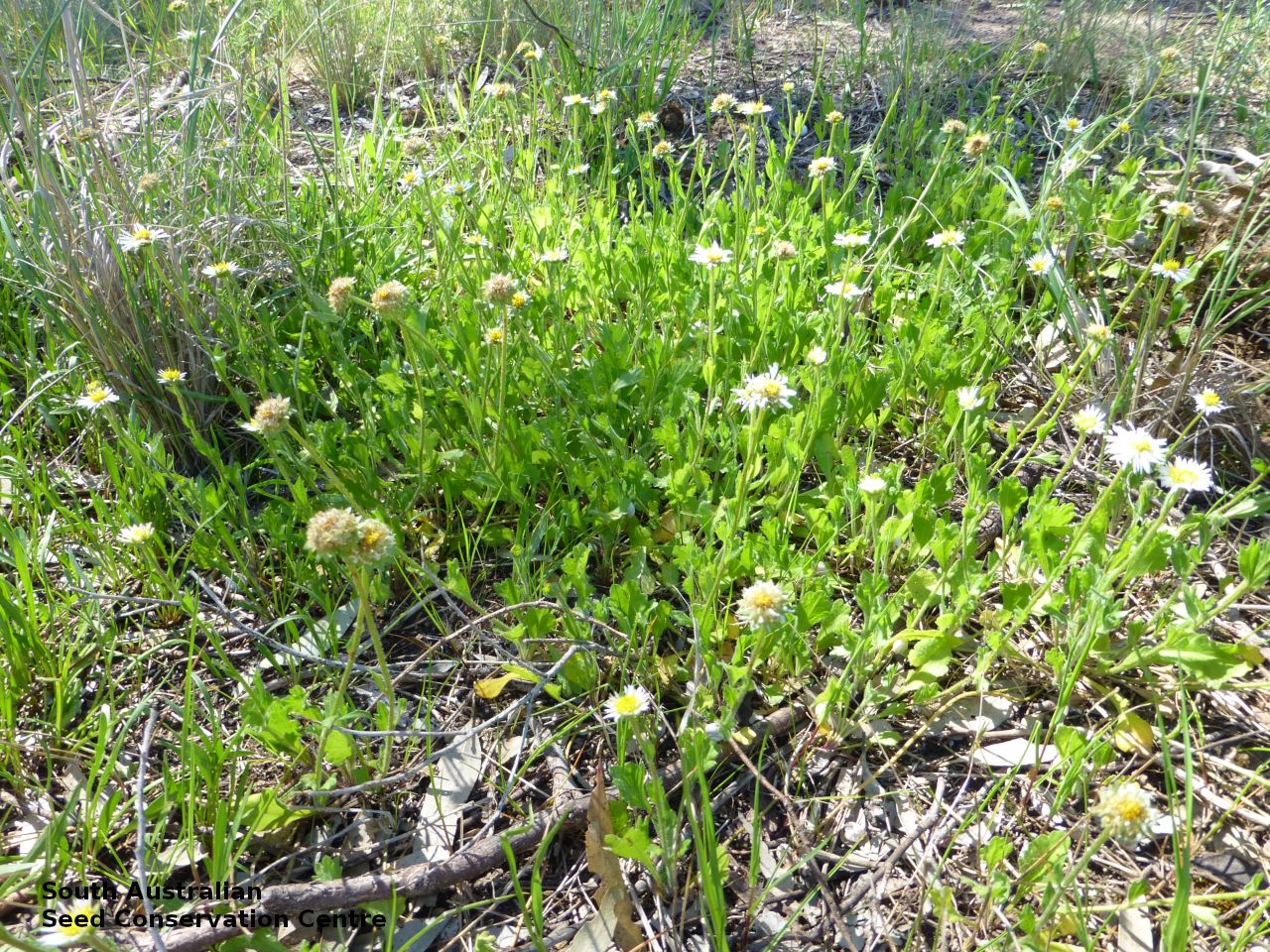
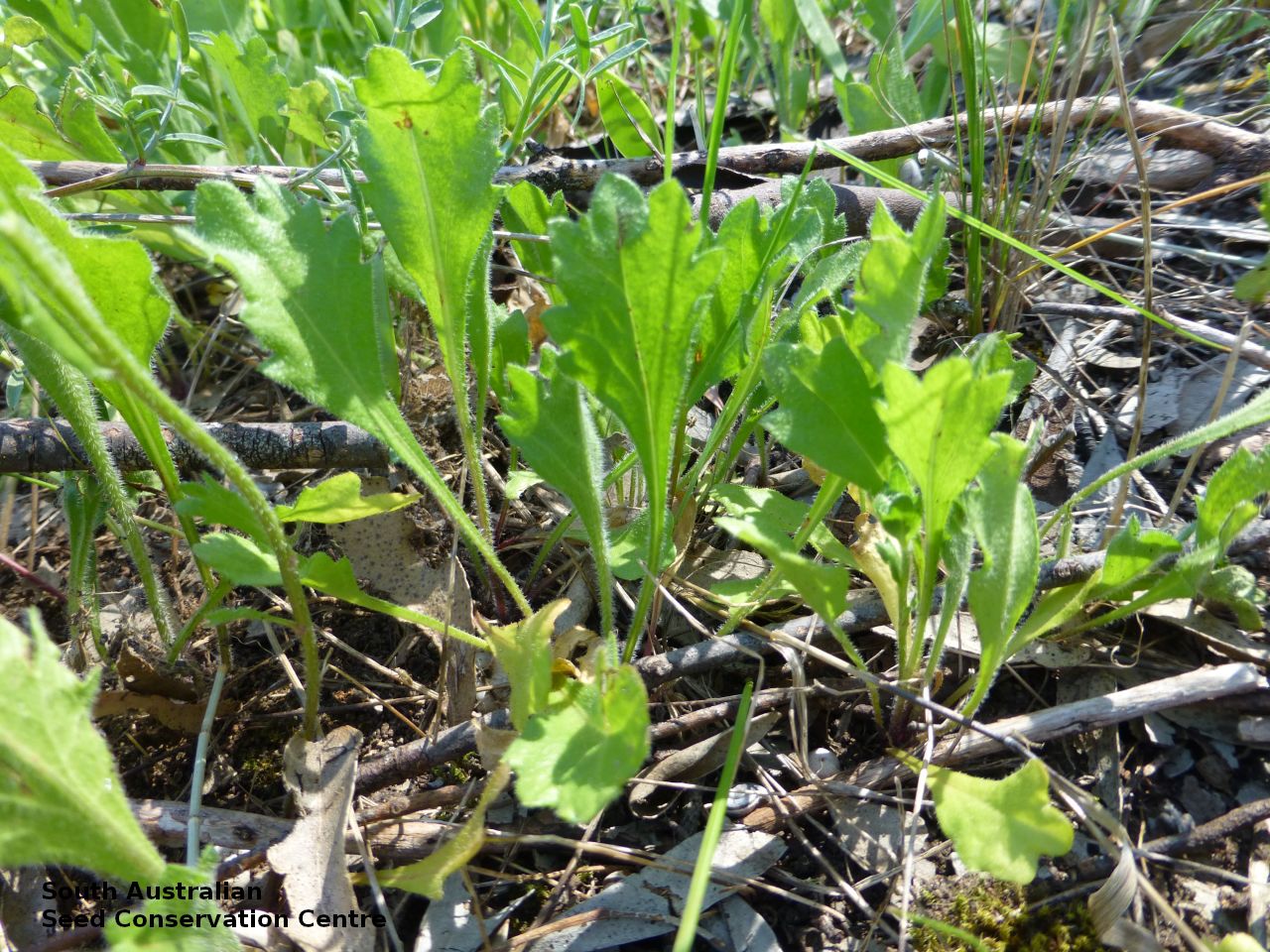
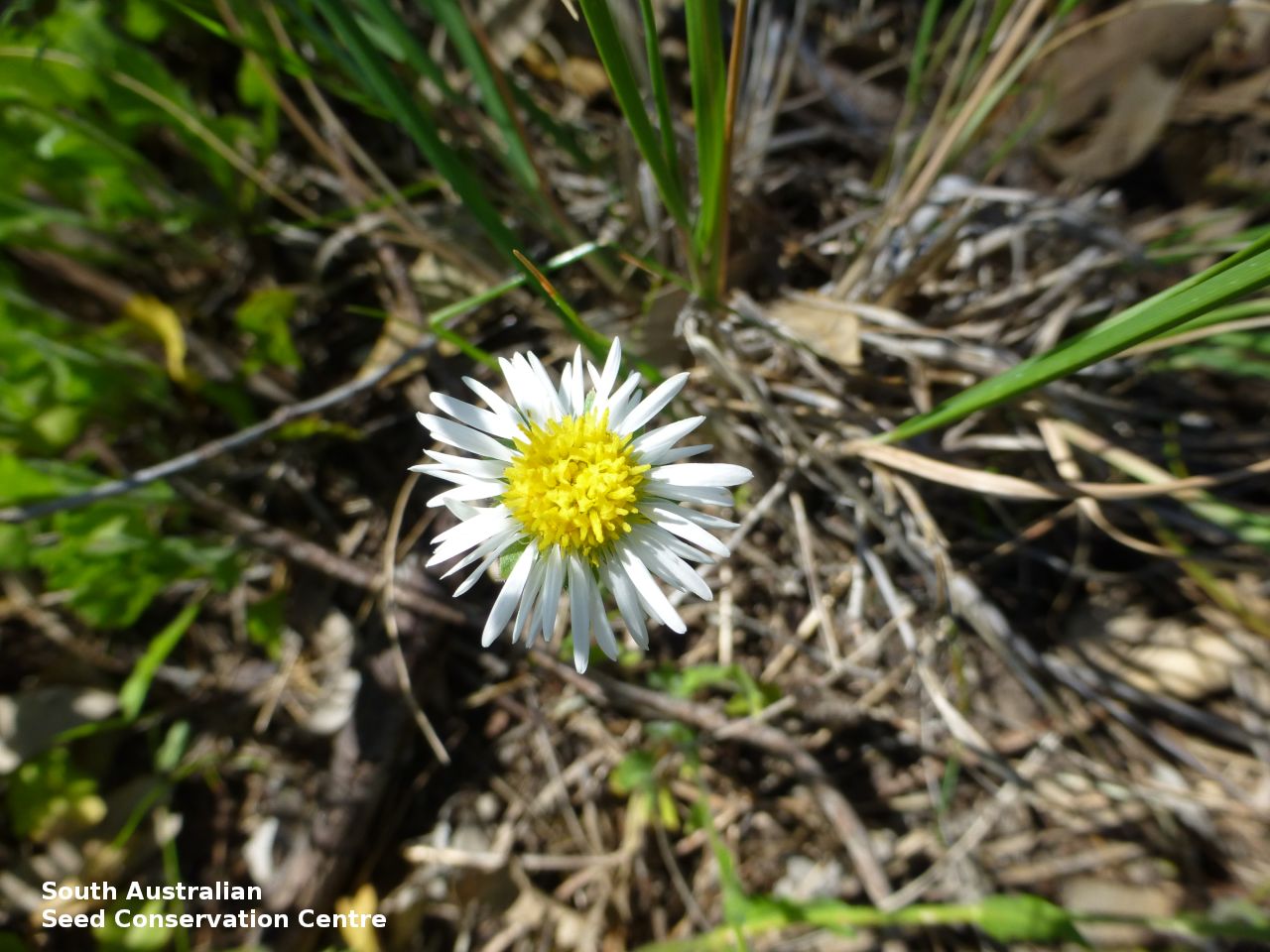
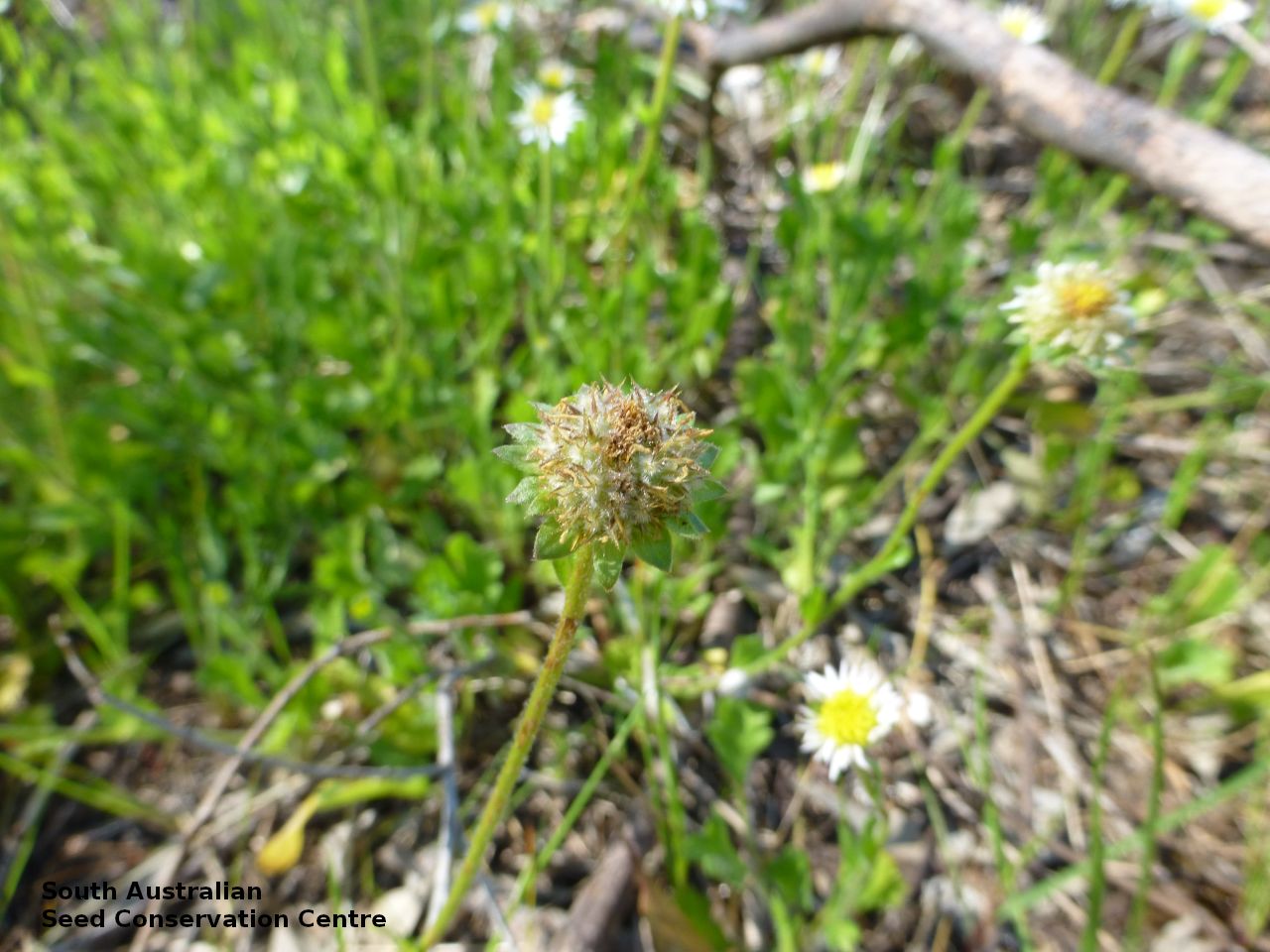
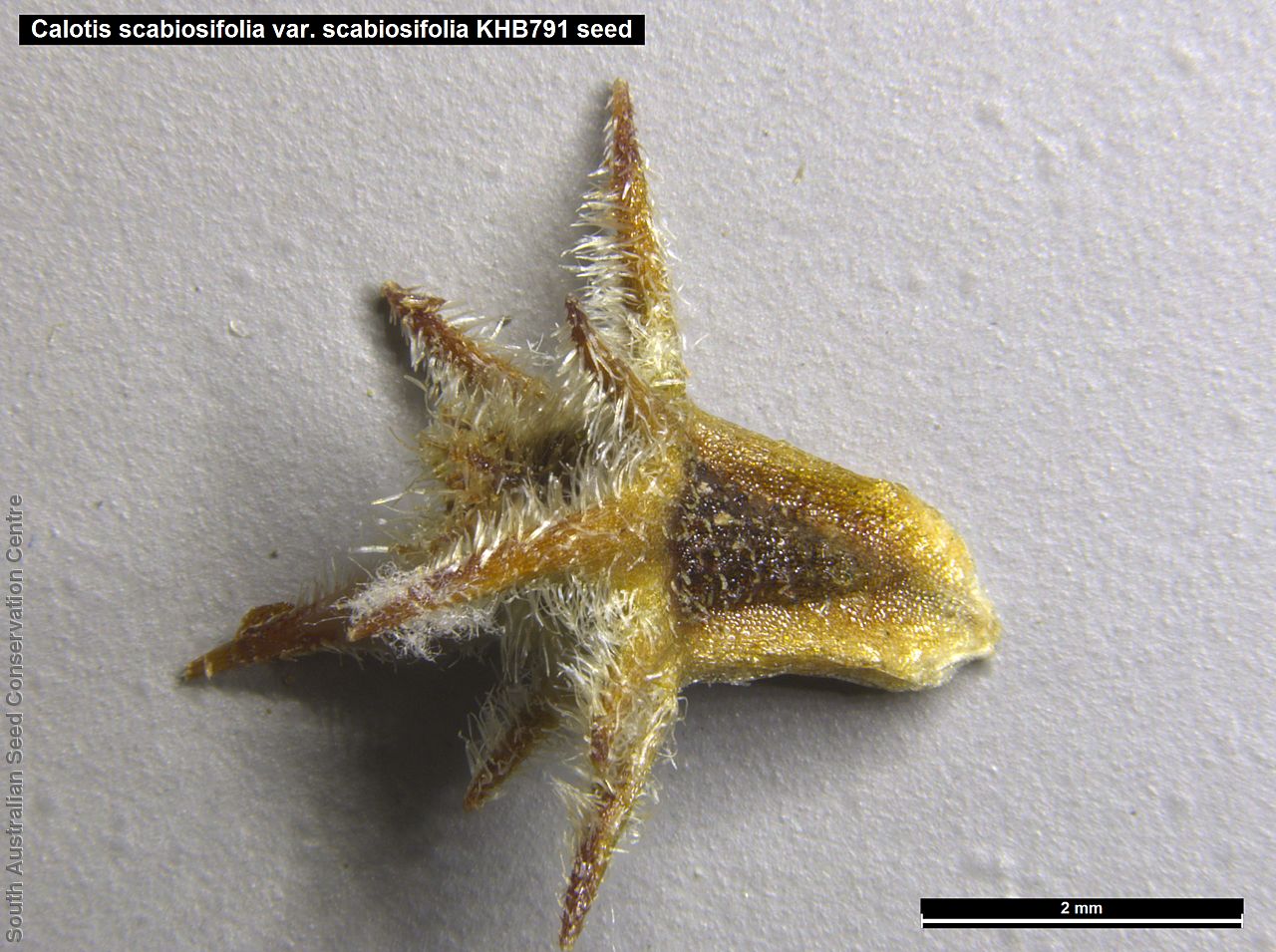
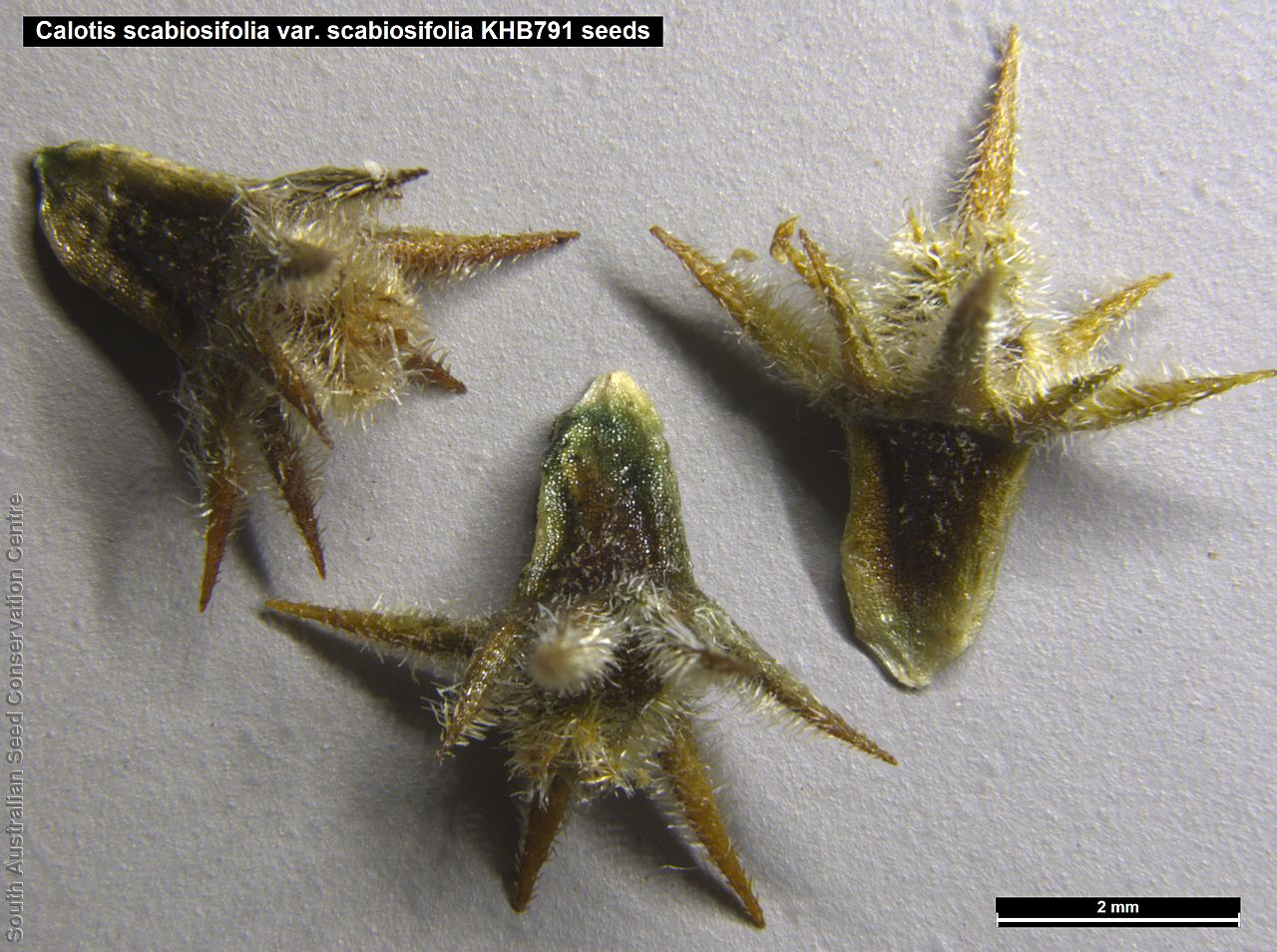

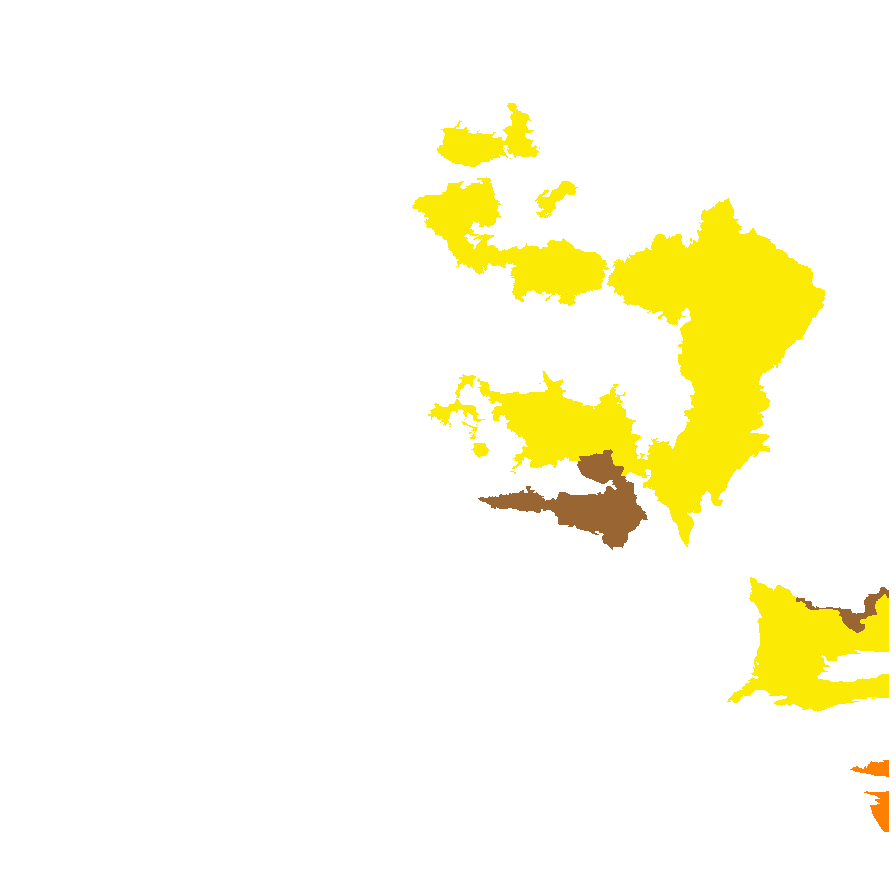
Botanical art
Prior names
Calotis muelleri
Etymology
Calotis from the Greek 'kalos' meaning beautiful and 'otos' meaning ear, after the first species named in the genus Calotis cuneifolia which has an ear-shaped pappus. Scabiosifolia from the Latin 'scaber' meaning rough and 'folia' meaning leaves, referring to the rough leaves of the plant.
Distribution and status
Found in the Murray, Flinders Ranges and South Eastern regions of South Australia growing in open woodland and grassland communities, on heavy clay soils in low-lying areas. Also found in Queensland, New South Wales and Victoria. Native. Common in South Australia. Common in the other States.
Herbarium regions: Flinders Ranges, Murray, South Eastern
NRM regions: Northern and Yorke, South Australian Arid Lands, South Australian Murray-Darling Basin, South East
AVH map: SA distribution map (external link)
Plant description
Stoloniferous perennial herb to 45 cm high. Basal leaves broad-spathulate, 4-18 cm long, 7-40 mm wide. Stem leaves mostly sessile, entire or dentate, elliptic, 0.5-2.5 cm long, 2-10 mm wide. Flower-head solitary or in loose leafy terminal cymes of 2-6 flowers, ray florets white. Flowering between May and October. Fruits are brown round spiny fruit-head. Seeds are brown trianglar seed to 2 mm long, with numerous hairy spine at one end. Seed embryo type is spathulate fully developed.
Seed collection and propagation
Collect seeds between August and November. Collect mature seed heads that are dried and turning brown by picking off the heads and placing them in a paper bag. Be careful as the heads are spiny. Leave the heads in the paper bag to dry for at least a week. No further cleaning required if only the heads are collected. If other material were collected, use a sieve to separate the unwanted material. Whole heads can be stored with a desiccant such as dried silica beads or dry rice, in an air tight container in a cool and dry place. Seeds are non-dormant, viable seed should germinate readily.
| Location | No. of seeds (weight grams) | Number of plants | Date collected | Collection number Collection location | Date stored | % Viability | Storage temperature |
|---|---|---|---|---|---|---|---|
| MSB | 1,000 (3.4 g) | 50 | 31-Oct-2007 | RJB75374 South Eastern | 35% | ||
| BGA | 850 (3.12 g) | 20 | 6-Nov-2012 | DJD2397 South Eastern | 27-Feb-2014 | 80% | -18°C |
| BGA | 1,800 (5.21 g) | 40+ | 16-Oct-2013 | KHB800 Flinders Ranges | 24-Mar-2015 | 65% | -18°C |
| BGA | 640 (1.94 g) | 40+ | 21-Dec-2016 | KHB791 South Eastern | 30-Jun-2018 | 75% | -18°C |
Number of plants: This is the number of plants from which the seeds were collected.
Collection location: The Herbarium of South Australia's region name.
% Viability: Percentage of filled healthy seeds determined by a cut test or x-ray.